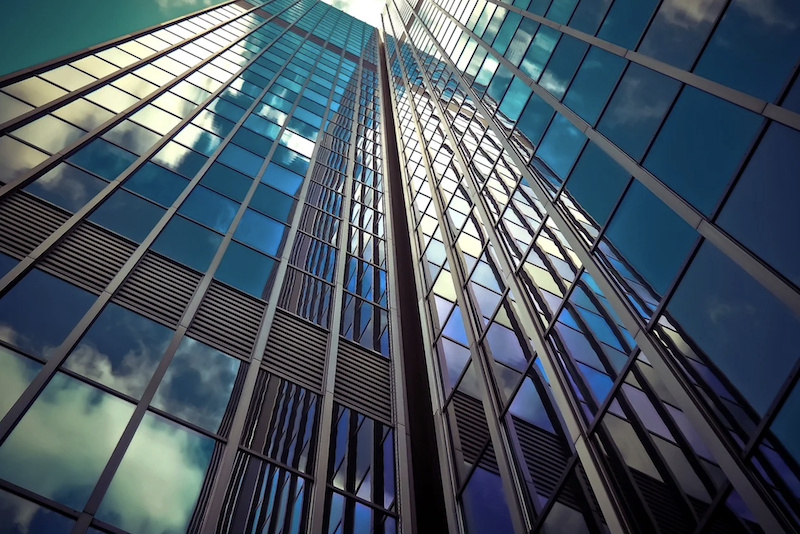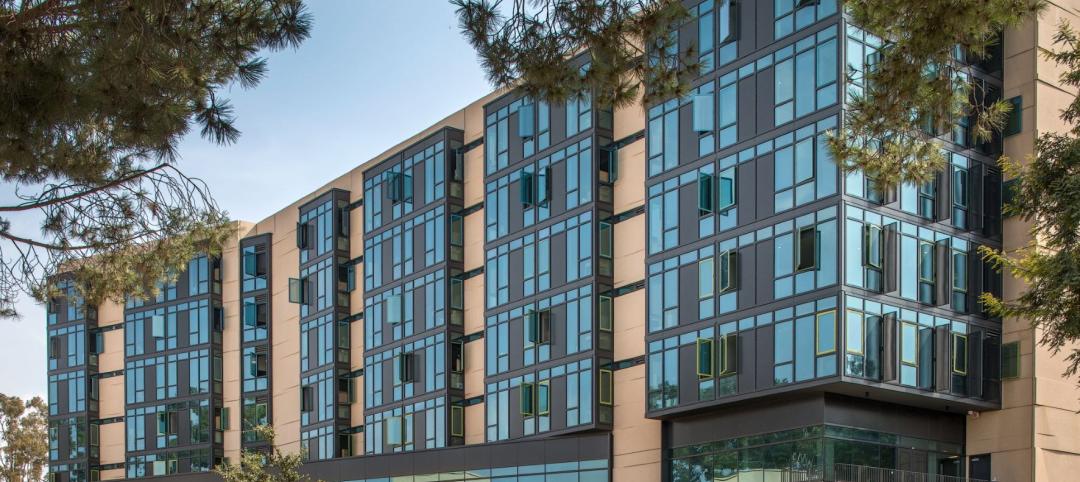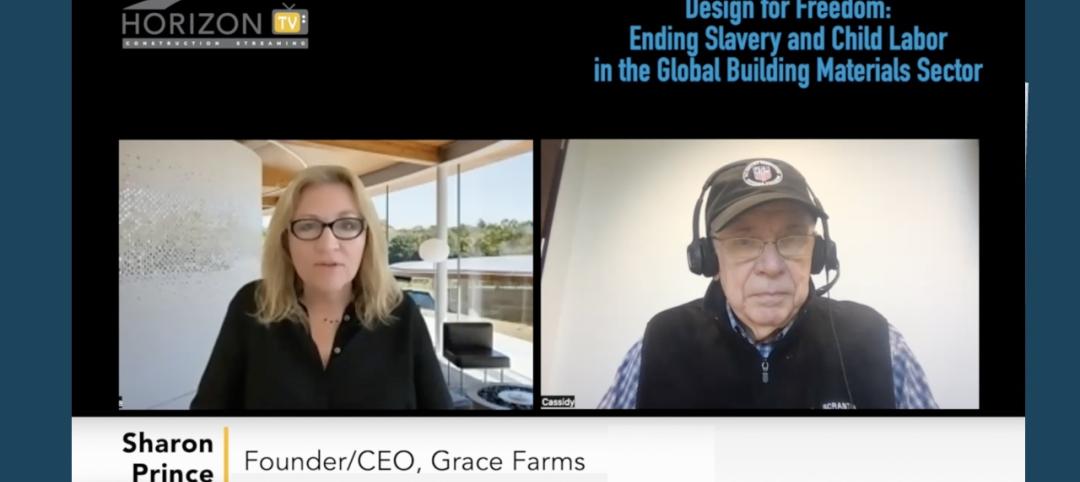In the “Glass Box Paradox,” Paladino and Company contend that there is a causal relationship between the performance of the façade of One Bryant Park (OBP) and the building’s overall energy use. This is a massive over-simplification of the building’s energy profile. Furthermore, the authors rely on the flawed methodology of “Site Energy Use Intensity (Site EUI)”, which penalizes the use of cutting-edge sustainability features such as Co-Generation and Ice Storage and, ironically, discourages density and the sharing of resources in the name of environmentalism. And, most importantly, it ignores that buildings are places which should promote the health, welfare and productivity of the people who work and live in them.
First and foremost, OBP is a building designed for people. Productivity, wellness, and providing optimal conditions for work to occur, were all drivers of the design of the building. The mechanical systems and envelope were designed to efficiently support those goals. The authors provide some good ideas for how to modify a façade to make it more energy efficient. Most of their recommendations were considered when the building was designed and many incorporated into the final constructed envelope, including:
-
High-performance glazing: The curtainwall at OBP features low-iron, insulated glazing with a ceramic frit pattern which cuts down on heat gain while still allowing for optimal views and an abundance of daylight,
-
Envelope details:
- Fritted glazing, insulated spandrel
- Overall R-value: 2.03
- Glazing Percentage: 62% vision glass
- Solar Heat Gain Coeffcient (SHGC): 0.4 for clear, 0.28 for fritted glazing
- Visual Transmittance: 74% for clear, 59% for fritted glazing
-
Envelope details:
It is true that OBP, consumes more energy compared with other buildings of its size. This is related to the level of the fenestration in the building, but not caused by it. Even if OBP featured a highly insulated exterior wall assembly with tiny porthole windows it would still have high energy use. It would also be a very unpleasant and unproductive place to work. OBP’s high energy use is primarily caused by the density of people who work in the building, the energy intensive work they do, and the delivery and conditioning of air at a high quality level. The three most significant factors that contribute to the building’s energy use are:
- Occupancy: 8,000 people work at OBP, and the building operates nearly 24-hours a day. There is significant energy required to provide adequate outside air to ventilate the space and the plug-load for that density of use is large.
- Intensity of Use: There are 350,000 square feet of extremely high-density trading operations and on-site data storage, which consume a lot of energy.
- Outside Air Delivery and Conditioning: Tempering the air in a building with that many inhabitants and a high percentage of glazing does use considerable energy, but the benefits of highly filtered outside air provided at above code required levels are substantial.
Even though OBP may consume more energy, it produces less Carbon Dioxide than similar buildings that use less energy directly from the grid. OBP only appears more inefficient because Site EUI, rather than Source EUI, is the metric used to compare energy use. Site EUI is perverse metric, which hides the inefficiencies of the grid and power plants. Instead of drawing most of its energy from power plants, OBP has an on-site 4.6-Megawatt combined heat and power (co-generation) plant that produces two thirds of the building’s energy at twice the efficiency of a conventional power plant. OBP also employs the use of an on-site Ice Storage plant as a thermal battery that shifts energy demand to off-peak hours, reducing the burden on New York City’s energy grid and carbon emissions. It also protects New York City’s air quality by reducing peak demand on the grid and keeping dirtier “peaker” plants offline. The cogeneration system converts natural gas into electric and heat energy at an efficiency that surpasses that of the utility. Yet, the energy conversion losses borne by the cogeneration plant, despite the overall reduction of carbon, are attributed to OBP and raise the overall site EUI. If Source EUI were used to compare buildings rather than Site EUI then OBP would excel compared to buildings of similar use and typology that procure energy from the existing inefficient grid and its power plants.
See Also: The glass box paradox
The authors argue that despite its design and Platinum LEED rating, the building earns an Energy Star D rating and incorrectly concludes that the building performs poorly. Local law 84, which relies on Energy Use Intensity as its metric, is a simplistic formula that compares total annual energy over the total square footage. It does not account for population density, hours of operation, building typology, specialized space types (within the office category) or any other variable. The Energy Star rating which uses the national CBECS database to calculate the score is more sophisticated than EUI alone, but the Energy Star metric does not accurately represent New York City buildings. Buildings over 1 million square feet are considered “outliers” in the Energy Star sample set and other population and operational data is truncated. Large, densely occupied, high-rise buildings in New York City are obviously very different in their energy profile than many buildings across the nation. Local law 97, penalizes buildings based on their calculated carbon footprint, which is superficially reasonable until you realize that higher density and all its environmental benefits are strongly related to a higher site EUI. New York City’s density which results in sharing of resources, decreased travel distances and the preservation of open space is, ironically, discouraged by Local Law 97.
The Durst Organization has built some of the highest performing and most environmentally advanced buildings in the world. We use energy and natural resources efficiently, but we also understand that buildings are for people and their health, wellness and productivity are equally important. A building without fenestration, no doubt, uses less energy than a building with a glass curtain wall, but we strive to make places where people flourish and thrive and natural light, fresh air and views are integral to this goal.
Related Stories
Cladding and Facade Systems | Jun 5, 2023
27 important questions about façade leakage
Walter P Moore’s Darek Brandt discusses the key questions building owners and property managers should be asking to determine the health of their building's façade.
Codes | Mar 2, 2023
Biden Administration’s proposed building materials rules increase domestic requirements
The Biden Administration’s proposal on building materials rules used on federal construction and federally funded state and local buildings would significantly boost the made-in-America mandate. In the past, products could qualify as domestically made if at least 55% of the value of their components were from the U.S.
AEC Innovators | Feb 28, 2023
Meet the 'urban miner' who is rethinking how we deconstruct and reuse buildings
New Horizon Urban Mining, a demolition firm in the Netherlands, has hitched its business model to construction materials recycling. It's plan: deconstruct buildings and infrastructure and sell the building products for reuse in new construction. New Horizon and its Founder Michel Baars have been named 2023 AEC Innovators by Building Design+Construction editors.
Glass and Glazing | Jan 6, 2023
Vitro Architectural Glass announces new names for three Solarban Glass Products
Vitro Architectural Glass (formerly PPG Glass) announced that it will be renaming three of its signature Solarban® solar control, low-emissivity (low-e) glass products at the beginning of 2023. While the products will have new names, the performance and visual characteristics of all three glasses will remain the same.
Office Buildings | Dec 6, 2022
‘Chicago’s healthiest office tower’ achieves LEED Gold, WELL Platinum, and WiredScore Platinum
Goettsch Partners (GP) recently completed 320 South Canal, billed as “Chicago’s healthiest office tower,” according to the architecture firm. Located across the street from Chicago Union Station and close to major expressways, the 51-story tower totals 1,740,000 sf. It includes a conference center, fitness center, restaurant, to-go market, branch bank, and a cocktail lounge in an adjacent structure, as well as parking for 324 cars/electric vehicles and 114 bicycles.
75 Top Building Products | Nov 30, 2022
75 top building products for 2022
Each year, the Building Design+Construction editorial team evaluates the vast universe of new and updated products, materials, and systems for the U.S. building design and construction market. The best-of-the-best products make up our annual 75 Top Products report.
Building Materials | Nov 2, 2022
Design for Freedom: Ending slavery and child labor in the global building materials sector
Sharon Prince, Founder and CEO of Grace Farms and Design for Freedom, discusses DFF's report on slavery and enforced child labor in building products and materials.
Building Materials | Aug 3, 2022
Shawmut CEO Les Hiscoe on coping with a shaky supply chain in construction
BD+C's John Caulfield interviews Les Hiscoe, CEO of Shawmut Design and Construction, about how his firm keeps projects on schedule and budget in the face of shortages, delays, and price volatility.
Building Materials | Jun 20, 2022
Early-stage procurement: The next evolution of the construction supply chain
Austin Commercial’s Jason Earnhardt explains why supply chain issues for the construction industry are not going to go away and how developers and owners can get ahead of project roadblocks.
Sponsored | BD+C University Course | May 3, 2022
For glass openings, how big is too big?
Advances in glazing materials and glass building systems offer a seemingly unlimited horizon for not only glass performance, but also for the size and extent of these light, transparent forms. Both for enclosures and for indoor environments, novel products and assemblies allow for more glass and less opaque structure—often in places that previously limited their use.

















